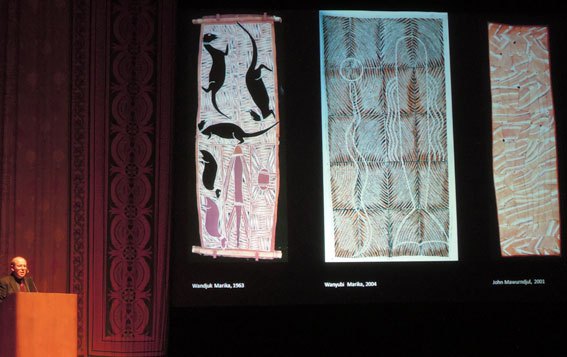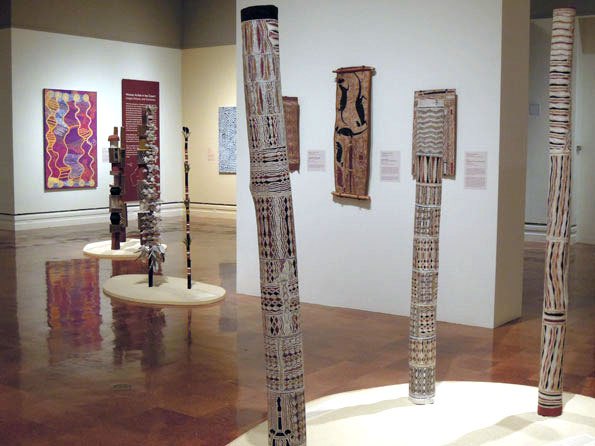As part of the series of events related to the exhibition Crossing Culture at the Toledo Museum of Art (US), IDAIA is sharing the well informative article written by Will Owen reporting on Wally Caruana’s lecture on “The Emergence of Aboriginal Australian Art in the Public Domain”. If Aboriginal artists have been largely presented across the old continent, the United States (and more globally North America, with exhibition Sàkahan at the National Gallery of Canada) have seen a significant increase in their presence in institutional exhibitions. Will Owen interrogates how the interest in Aboriginal art in the United States can be maintained.
Talk by Wally Caruana – Crossing Cultures
by Will Owen, 16 June 2013
“Last weekend we were again in Toledo, Ohio, for a series of events related to Crossing Cultures. The Toledo Museum of Art is now led by Brian Kennedy, formerly the Director at the NGA from 1997 to 2004 and afterwards Director of the Hood Museum of Art from 2005 to 2010. When Brian arrived in Canberra, Wally Caruana was the Senior Curator of Aboriginal and Torres Strait Islander Art. Wally was then about to launch the landmark exhibition Painters of the Wagilag Sisters Story. That exhibition served as Brian’s introduction, up close and personal, to the world of Aboriginal art, for the gallery was filled with a dozen senior men from Arnhem Land who had come to help prepare for the exhibition’s opening.
The two NGA veterans met again this weekend, along with Katie Russell, the Head of Learning and Access at the National Gallery. Wally gave a lecture on Thursday night on “The Emergence of Aboriginal Australian Art in the Public Domain.” The hour-long talk traced the engagement of white Australia with varied manifestations of Aboriginal art, beginning with the early collecting efforts of researchers like Baldwin Spencer, who took an interest in the paintings he saw in caves and on bark shelters during his travels through northern Australia in the second decade of the twentieth century.
From that starting point, Wally examined the presentation of art—and the persistent tension between the work as fine art or as ethnographic artifact—over the succeeding decades of exhibitions and collecting. The overall structure of his talk was geographic: after examining the early interest in bark painting and proceeding through the changes in the genre over time as dialogue between the cultures matured, Wally turned his attention to the development of acrylic painting in the deserts.
Here his focus was again historical as he presented correlations between traditional ritual arts and the origins of the acrylic movement at Papunya with the transformations that have taken place in the decades since Geoffrey Bardon encouraged and facilitated the presentation of traditional iconography on permanent and portable material.
From there Wally took us to the Kimberley and the changes that were wrought in the wake of Cyclone Tracy. He drew out the implications of the storm’s devastation for the proper maintenance of Aboriginal culture as they were manifested in Rover Thomas’s revelatory dreams, recounted the beginnings of ochre painting on board that supported the Kurrir Kurrir ceremonies, and traced the subsequent development of the East Kimberley school of painting.
Finally, his lecture brought into focus the art created in the population centers where the vast majority of Aboriginal people live: the so-called Boomerang Coast that stretches from Adelaide to Brisbane. He selected Richard Bell as an exemplar of the urban artist who challenges notions of Aboriginal identity and the creation of Aboriginal art for white audience. There was a nod to Brian Kennedy here as well, for Brian was one of the judges of the 2003 National Aboriginal and Torres Strait Islander Art Award who awarded Bell’s Scientia e Metaphysica (Bell’s Theorem) top honors that year”… [Read more]

